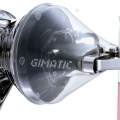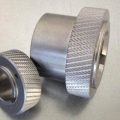With regard to precision mechanics (and perhaps not only that area) do you think it is possible to diversify two or more solutions created for similar applications? It’s not a trick question, I’d just like to know your point of view on an issue that I often find myself addressing and discussing with my customers. This is what typically happens:
Two purchasers operating in the same sector contact us for a project that they would like to assign to us, knowing that we could be the ideal choice yet somewhat fearful that we might have one of their competitors in our customer base.
This is a situation that occurs quite frequently at MICROingranaggi. Little by little over the years, we have in fact constructed a network of customers from many different product sectors – automation, robotics, packaging, home automation, medical, shipbuilding, textile, aeronautics, military – and this has also resulted in us having to handle requests for solutions for similar, if not even the same, applications.
Almost all customers ask us to sign confidentiality agreements and some (rarely but sometimes it does happen) exclusive contracts.
There is however a matter that many often ignore or even sometimes find hard to believe. The solutions we provide are always different from each other, even in the case of similar applications.
How is this possible? It is because we think that supplying a customer with a product that is almost identical to one created for one of its competitors is not the correct way to proceed. And this is not only from an ethical point of view but also and especially it has to do with customization of the solution we are proposing.
When creating two solutions for applications that are similar to each other we never in fact start from an existing project but from a specific request, from a project brief with the customer.
And it is precisely proceeding in this manner that we realized that the requests we receive are never identical to each other. Even if we refer to similar products for equal applications, there will always be differences.
It may be the application context, the sizes or the company philosophy. Furthermore, there are those who are perhaps more geared towards the need to have a quiet product while others will focus on durability and strength. These initial differences, while apparently marginal, in fact result in the creation of solutions that are entirely different from each other.
Let’s return to a practical example that I mentioned some time ago. Imagine that the product in question is a pair of wire cutter pliers for the cutting and stripping of electrical wires. The maximum operating conditions of such a tool are known. The fact remains that the initial requirements will most probably be different. It may, for example, be the case that users of such tools often drop them, slipping through their fingers by accident, information that highlights the fact that the customer will place importance on the durability of the product. Or it is possible that this sort of tool must primarily be used within confined spaces and consequently it is necessary to focus on miniaturization of the solution.



